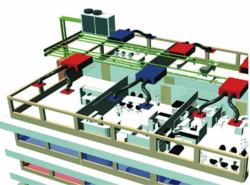Colt offers ‘multi-split’ air conditioning with low refrigerant use



HS2 Code of Practice is good news for JIB members
High Speed Two Limited (HS2 Ltd) has released its Employee and Industrial Relations (EIR) Code of Practice (the Code), which brings significant advantages to Joint Industry Board (JIB) member companies looking to work on one of the most demanding and exciting transport projects in Europe.
Industry leaders gather at CIBSE’s Measuring Performance and Facilities Management conference
CIBSE’s Measuring Performance and Facilities Management conference recently brought together leading voices from across the built environment to explore the evolving landscape of building performance and operational excellence.